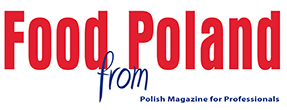Today Henkel is a global company with 170 production sites in 55 different countries; more than 85 percent of its sales is generated outside of Germany. Dr. Konrad Henkel, grandson of the company’s founder and Chairman of the Management Board from 1961 onwards, had a particularly big role in this international development: He was the one who expanded the business abroad when he took office and developed the family-owned business that had been active mainly on the German market into an international corporation.
The beginnings of the company’s internationalization, however, date back to its earliest years: In 1878, Fritz Henkel was already selling his detergents abroad. Initially, these sales happened almost spontaneously as a result of the success of “Henkel’s Bleich-Soda”. Having rapidly identified the potential of this, Henkel soon launched a targeted sales effort with its own traveling sales staff and signed deals with foreign companies that would import Henkel products and introduce them on their respective markets. As a result, Persil became available in New York only three years after its launch in 1907. While this mainly concerned sales at first, it was only a few years before production was also expanded to other countries: The opening of the first foreign production site in Switzerland in 1913 was quickly followed by additional sites across 11 European countries – from Norway to Hungary – by 1937. The first non-European subsidiary was founded in 1951 in South Africa.
An attractive investment
To continue driving its growth and international development, on October 11, 1985, Henkel made an important decision: its initial public offering. The company’s successful expansion was soon reflected in the performance of its stock – something which has continued to this day. Shareholders who invested the equivalent of 1,000 euros when Henkel preferred shares were issued in 1985, and who reinvested the dividends (without deduction of tax) into the share, had their assets valued at 34,171 euros by the end of 2015. This is the equivalent of a 12.4-percent average interest rate per year. By comparison, the DAX achieved an annual interest rate of 7.7 percent over the same period. The Henkel share’s success story has gone hand in hand with the company’s development: Sales rose from the equivalent of 4.7 billion euros in 1985 to 18.1 billion euros in the past fiscal year.
Strategic acquisitions around the world
The placement of its shares gave Henkel a stronger financial foundation, and thus more flexibility for acquisitions. The largest in the company’s history to date was the acquisition of the National Starch adhesives and electronics businesses in 2008, which have significantly strengthened Henkel’s Adhesive Technologies business unit. Other important acquisitions that have shaped Henkel’s development over the last decades include Schwarzkopf (1995) and Loctite (1997). Just recently, in September 2016, Henkel acquired the US-based detergent company The Sun Products Corporation – an important step for its business in North America. As a result, Henkel advanced to a No. 2 position in the North American laundry care market.
You’ll find more historical milestones in our jubilee timeline.
source: henkel.com

















